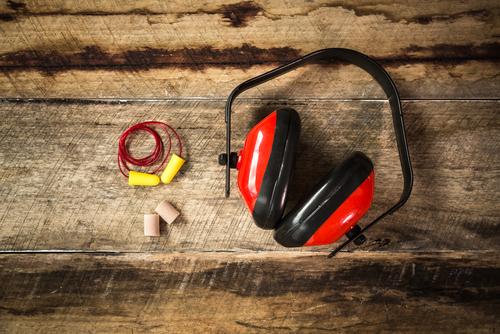Noise monitoring is a vital part of your hearing conservation program. It can help you determine whether workers could be exposed at or above the action level; select workers for inclusion in a hearing conservation program; and enable the selection of appropriate hearing protection devices.

|
According to OSHA’s occupational noise standard (1910.95), area monitoring or personal noise dosimetry can be used for this purpose, as long as the monitoring results are representative of the workers’ exposure. For workers who are highly mobile or sound levels that are highly variable, the standard does require personal dosimetry.
Employees or their representatives must be offered the opportunity to observe any measurements that are taken to characterize their noise exposure, and any employees who are exposed at or above the action level must be notified of the results of the monitoring.
Identifying noise hazards
To find out whether noise may be a problem in your workplace, begin with a map of the workplace and identify areas where there is:
- Continuous noise
- Intermittent noise
Get a grip on your slips, trips and falls with this FREE webinar! This webinar, on February 25th, will provide the attendee with information on recognizing slip, trip and fall hazards, both from a height and from same level. Register today!
Consider whether noise levels vary by time of day (is the workplace noisier on first and second shifts than on third shift?), type of tasks being performed (is the workplace noisier when workers are fabricating than when they are finishing a work piece?), or even by weather (is it extremely noisy inside the building when it rains?).
You can then quantify noise levels to determine whether they may exceed OSHA’s exposure limits. You should begin by quantifying sound levels in different areas of your workplace, at different times of day, using a sound level meter (SLM).
Area monitoring with sound level meters
Sound level meters come in different classes or types. Class 1 or Type 1 SLMs, which are generally accurate to within ±1 decibel (dB), are more expensive; they are used in research, engineering, and law enforcement applications. Class 2 or Type 2 models, which are less expensive, are generally accurate to within ±2 dB—good enough to use in establishing sound pressure levels in most workplaces. They take a “snapshot” measurement of sound pressure levels, and they should integrate all continuous, intermittent, and impulsive sound levels from 80 dB to 130 dB into their measurements. Other classes or types of SLMs (other than integrating sound level meters (ISLMs), discussed below) should not be used for workplace measurements.
Free Safety Webcast: How to get a grip on your Slip, Trip and Fall Hazards. Slips, Trips and Falls are a leading cause of injury through our businesses and homes. Register today to learn how to avoid The most common instances of slips, trips and falls! Click here to register now!
To conduct an area survey with an SLM:
- Calibrate the SLM, following the procedure given in the user’s manual.
- Set the SLM’s response rate—this is the time period over which it averages its reading before displaying a result—for “Slow.”
- Ensure that the A-weighting filter, which will set the machine to measure in units of dBA, is “on.” Some SLMs have an A-weighting filter that is always on; others have adjustable filters for different applications. Workplace measurements for hearing conservation programs should be collected in units of dBA.
- Hold the SLM’s microphone at ear height and take a reading.
- When you record the reading, make sure to note the specific location where the reading was taken. Noise diminishes over distance or can vary due to structural factors (e.g., the presence of baffles, reverberation noise), so the noise levels right next to a piece of machinery may be significantly different from levels just 3 feet away.
- Recalibrate the SLM after you are finished.
This type of survey can help you develop a “map” of noise levels in the workplace and at employee workstations. If noise levels are fairly constant throughout each shift, these readings will also give you a good idea of whether employee exposures are likely to exceed OSHA’s exposure limits.
If, however, noise levels are variable, intermittent, or punctuated by impact noise, an instantaneous reading from an SLM may not give you sufficient information. To determine noise levels under those conditions, you may want to use an integrating sound level meter (ISLM). This type of meter can give you a reading of average sound levels at a given location over a period of time.
It should also be able to give you a “true peak” reading, letting you know the loudest sound level if you are trying to measure impulse or impact noise.
Tomorrow, we’ll look at personal noise dosimetry and when that is your best option for determining worker exposures.
